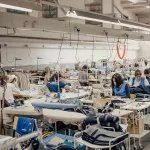Labour cost has been a major area of focus and an important factor for deciding the location of production facilities especially in the labour intensive textile and clothing sector. It’s a common knowledge that wages, costs, efficiency, productivity, and quality etc. are very much related with each other. We have – from time to time – witnessed scenarios where high wages not necessarily result into high productivity or, far that matter, even better work ethics or product quality. Per unit labour cost for first quality goods produced can be an acceptable norm but that also is not free from issues like working conditions, technology being used and management standards being practiced.If we can increase productivity by implementing best industry operational practices – which are already known and inexpensive – even then there is good scope of overall cost saving. Labor cost is just one element of competitiveness. The most critical factor of competitiveness is labor productivity in a particular given work environment which is influenced by a wide range of variables such as level of technology, workplace design and layout, factory size, material handling, training, product complexity, ratio direct/indirect personnel, efficiency management, etc. In view of this fact, Chinese textile and clothing companies are now directing their efforts to enhance efficiencies in their production and supply chain, apply innovative technologies and optimize overall costs. At the same time, it is also a fact that despite lower labor cost apparel companies in Cambodia, Vietnam, Thailand, Indonesia, Myanmar, Mexico and other promising destinations have to face infrastructural, logistics and supply chain difficulties along with shortage of skilled labour. Broadly speaking, one cannot do any thing to arrest the rising wages bill but certainly there is enough room to reduce the labour cost and remain competitive and avoid the pain.
According to a recent industrial survey in the US, it has been noted that after adjustments are made to account for American workers’ relatively higher productivity, wage rates in Chinese cities such as Shanghai and Tianjin are expected to be about only 30 percent cheaper than rates in low-cost U.S. states. Considering wage rates account for 20 to 30 percent of a product’s total cost, manufacturing in China will be only 10 to 15 percent cheaper than in the U.S. – even before inventory and shipping costs are considered. After those costs are factored in, the total cost advantage will drop to single digits or be erased entirely. Today, China is supplying a hefty 46- to 47-percent of all U.S. textile and apparel imports. Today, China is supplying a hefty 46- to 47-percent of all U.S. textile and apparel imports. This is predicted to noticeably change in coming years because the cost benefit that China offers is quickly eroding. The new generation of Chinese workers is not keen to toil in apparel factories, nor do they want to work for export oriented firms due to high stress level.
Today, Indian businesses are rushing to neighboring Bangladesh to set up shops or sourcing from there citing reasons like : 30% lower labour cost, flexible labour laws, duty-free access to the EU, lucrative tax laws and zero duty benefits, among others. One should, however, remember that these advantages are not going to last for long. The more viable long-term strategy should be to employ technological and management tools and come out as a winner.



